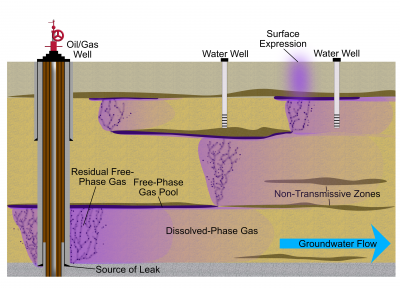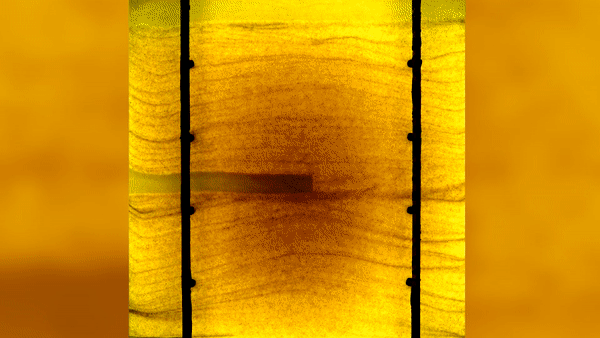Stray gas migration
Stray gas migration is the unintended release of natural gas from the deep subsurface because of infrastructure and operations associated with energy development. The released gas, which is mainly composed of methane, can migrate toward the shallow subsurface and lead to the degradation of groundwater quality, create an explosion hazard for nearby infrastructure, and/or enhance greenhouse gas emissions to the atmosphere.

The Van De Ven Research Group is working to understand the underlying processes driving gas migration, refine the conceptual model for gas migration, quantify impacts to groundwater and the atmosphere, and develop monitoring and remediation approaches.
Figure adapted from Molofsky, Connor, Van De Ven et al. (2021) – STOTEN.
Gas flow in saturated media
Understanding and quantifying the flow of gases in saturated porous media is important for many applications. The movement of these gases is dictated by the interplay of capillary, gravity, and viscous forces.
The Van De Ven Research Group studies how gases flow in the saturated zone, with emphasis on quantifying how gases become trapped, travel laterally, and then connect with the unsaturated zone and atmosphere. High resolution photography and image processing are key methods the group uses.
Multicomponent gas dissolution
Gases in the near subsurface are almost always multicomponent (containing more than one species, e.g., methane, carbon dioxide, nitrogen, oxygen). This makes the partitioning between gas and water in the critical zone complex and challenging to measure.

The Van De Ven Research Group uses a variety of tools including water sampling, visual techniques, soil gas sampling, efflux measurements, and sensors to investigate gas dissolution in the saturated and unsaturated subsurface. The high-resolution data collected can be used to describe the underlying processes and develop and validate mathematical models to simulate these systems.
Figure adapted from Van De Ven & Mumford (2020) – ES&T
